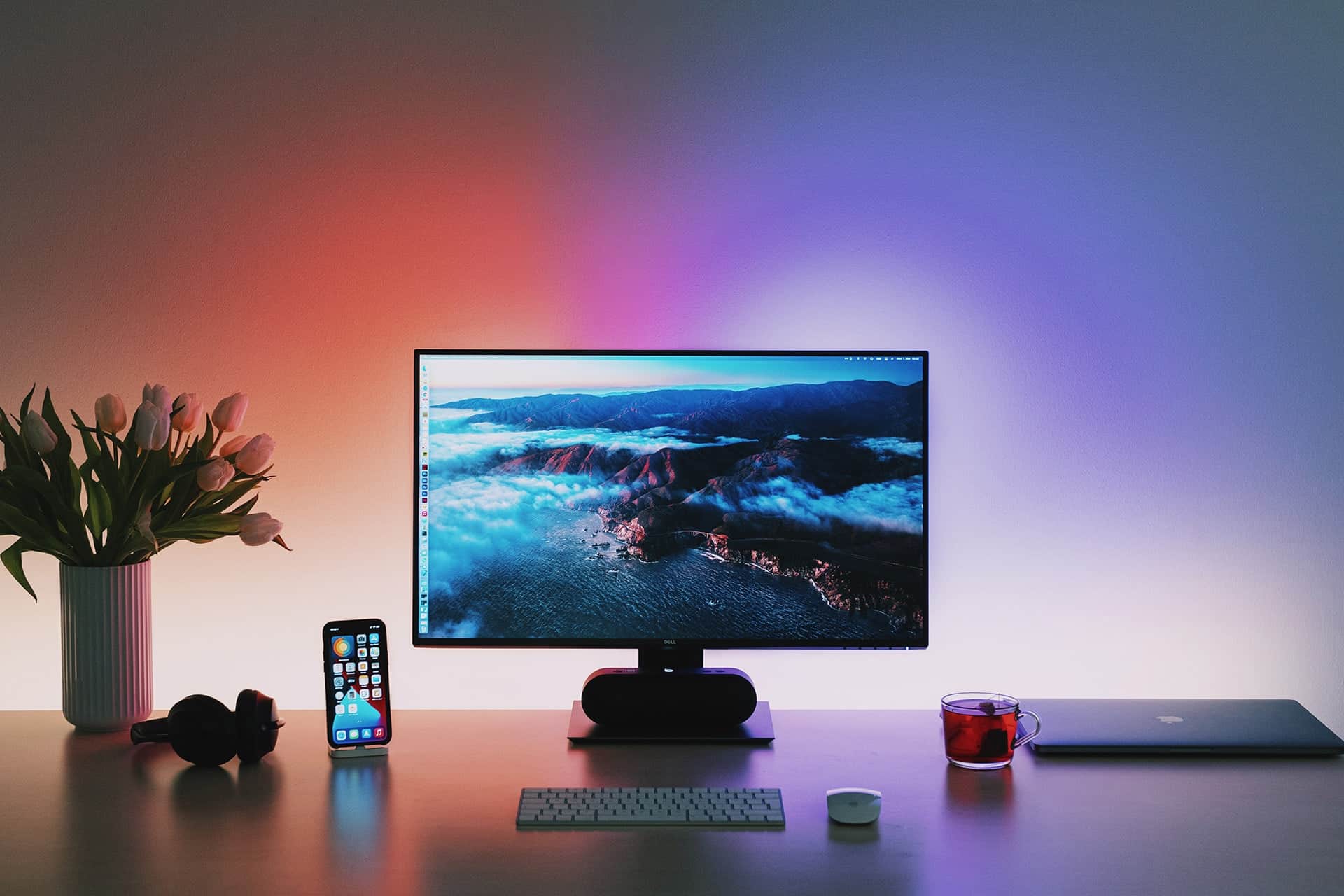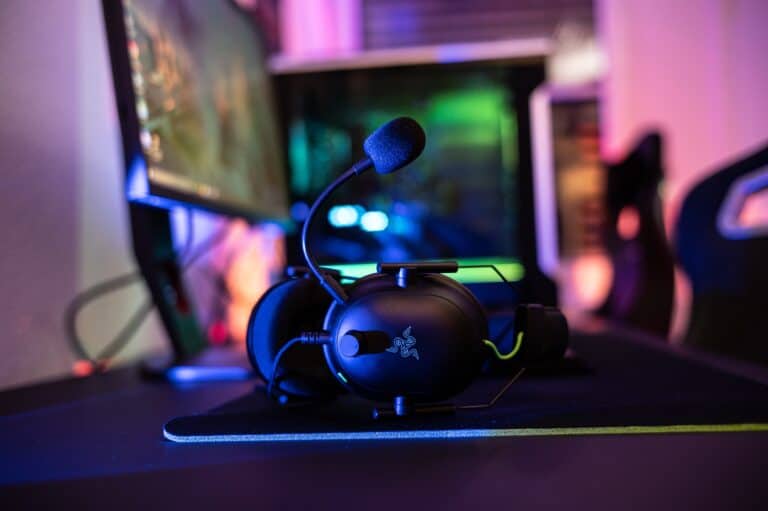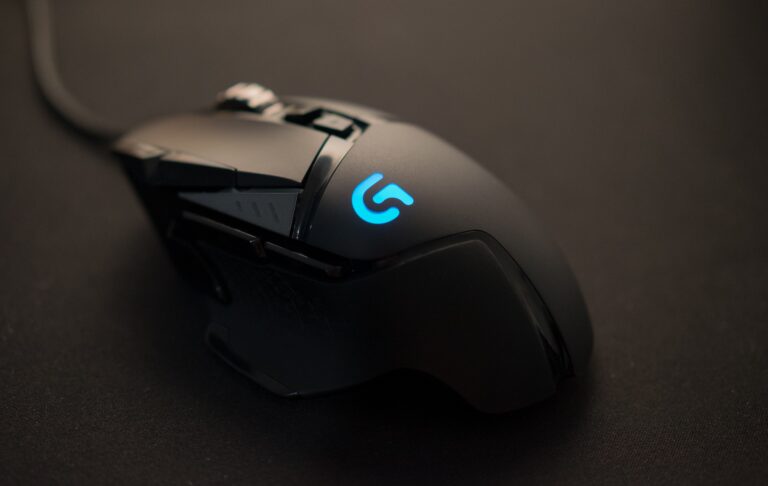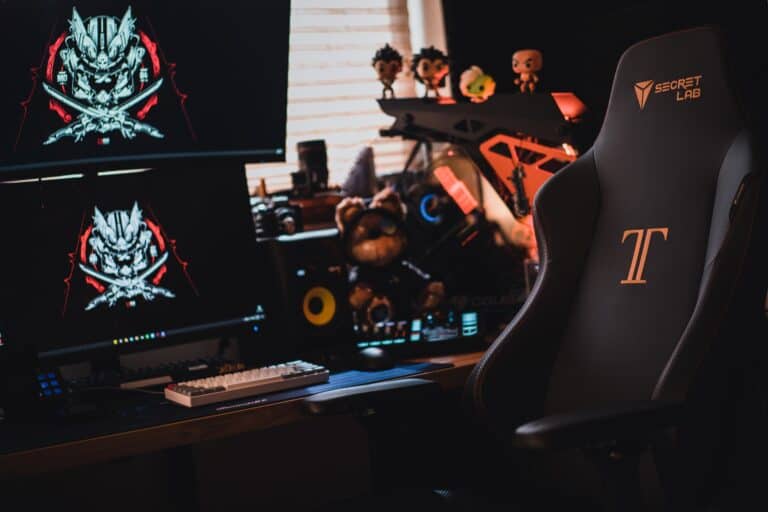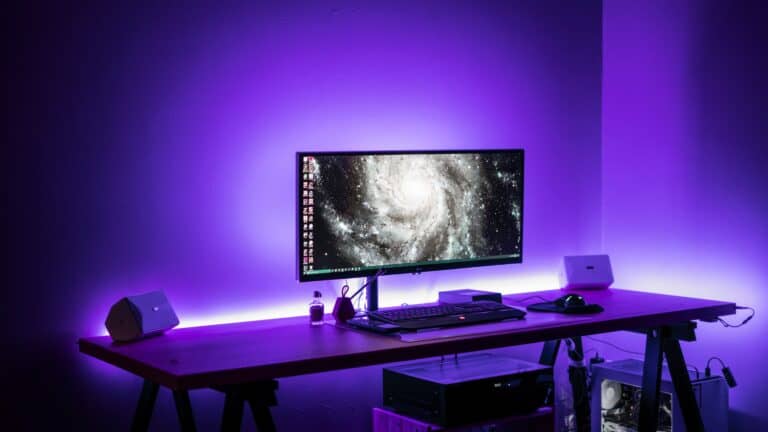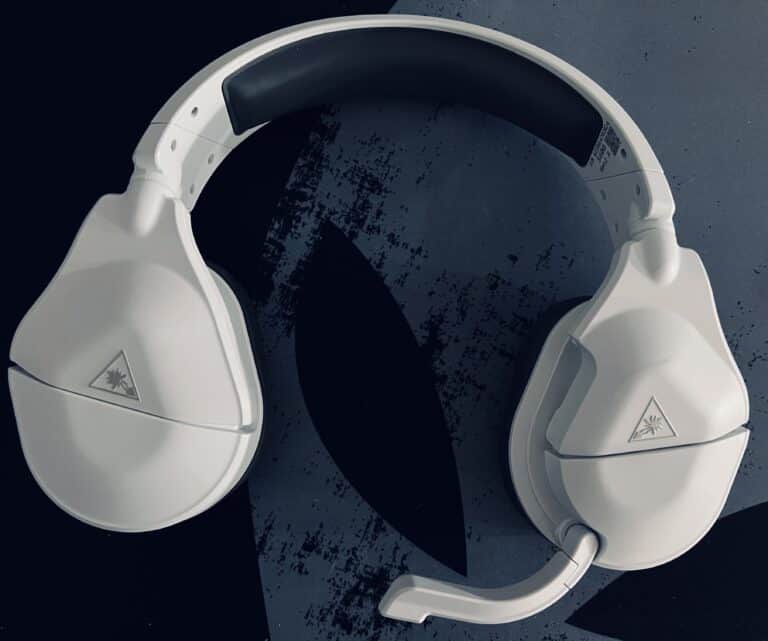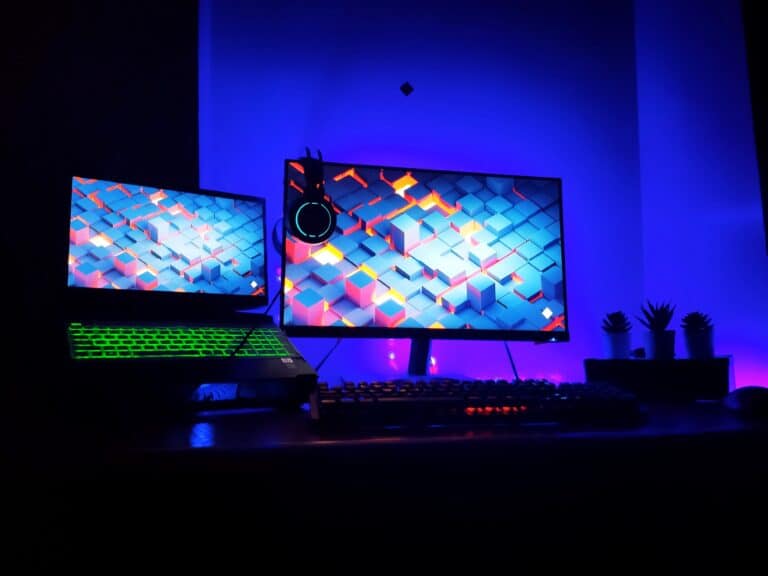5 Best 240Hz Gaming Monitors in 2023
When you purchase through links on our site, we may earn an affiliate commission from Amazon. If you would like to learn more, read our Disclaimer.
In the high-stakes world of competitive gaming, having the right equipment can mean the difference between a triumphant victory and a crushing defeat. One of the most crucial pieces of gear is your gaming monitor. With the emergence of 240Hz monitors, gamers can now take full advantage of an unprecedented level of smooth gaming experience and responsiveness. This guide will help PC and console gamers decide on the best 240hz gaming monitors for their gaming setup.
Our Top Picks
Different gamers have different needs when it comes to the best 240Hz gaming monitors. Here are our top picks that you should seriously consider:
- Best Overall: ASUS ROG Swift PG259QN
- Best Budget: Acer XF250Q Cbmiiprx
- Best for Competitive Gaming: BenQ ZOWIE XL2546K
What is a 240Hz Gaming Monitor and Why Do You Need One?
A 240Hz monitor refers to the refresh rate of the screen, which is the number of times it updates with new images each second. The higher the refresh rate, the smoother the on-screen motion appears. High refresh rate monitors such as a 240Hz monitor, updates its image at a maximum refresh rate of 240 times per second. This provides a significant advantage in fast-paced gaming scenarios where every millisecond counts.
Review of the Top 5 Best 240Hz Gaming Monitors in 2023
The ASUS ROG Swift PG259QN is a gaming monitor that pushes the boundaries of what’s possible. While it’s capable of a staggering 360Hz refresh rate, we’re focusing on its performance at 240Hz, which is already incredibly smooth.
The PG259QN features a Fast IPS panel. This is a type of IPS panel that has been optimized for speed, providing excellent color reproduction of IPS with a 1ms GTG (gray-to-gray) response time. This means that the PG259QN can provide both vibrant colors and fast, responsive gameplay.
The monitor is also G-Sync-compatible. This technology synchronizes the monitor’s refresh rate with the GPU’s frame rate, eliminating screen tearing and providing a smoother gaming experience. This is a crucial feature for gamers who want the smoothest gameplay possible. This monitor is an excellent choice for gamers who want the best of the best and are willing to pay for it.
- Pros: High refresh rate, excellent color reproduction
- Cons: Expensive, might be overkill for casual gamers
- Best for: Competitive gamers who need the fastest refresh rates
The Alienware AW2521HF is a top-tier gaming monitor that stands out in the 240Hz category. Its 24.5-inch screen size is perfect for gamers who want a balance between immersion and desk space. The Full HD resolution may not be the highest on the market, but it’s more than enough for most competitive games, which often prioritize performance over pixel count and image quality.
The monitor’s IPS panel is a significant selling point. IPS monitors have a type of screen technology known as In-Plane Switching. It is well known for its excellent color accuracy and wide viewing angles. This means that the colors on the AW2521HF will look vibrant and consistent, even if you’re viewing the screen from an angle.
The AW2521HF also boasts a 1ms response time, which is the fastest available. This low input lag means that the monitor can update its image incredibly quickly, reducing motion blur and making the gameplay feel more responsive. This response time is particularly important in fast-paced games where every millisecond counts.
Like the PG259QN, the AW2521HF is also NVIDIA G-Sync compatible, ensuring a smooth, tear-free gaming experience.
- Pros: Excellent color accuracy, wide viewing angles, picture quality, tear-free, and stutter-free gaming
- Cons: Pricey compared to other models
- Best for: Gamers who value color accuracy and smooth gameplay
The Acer XF250Q Cbmiiprx is a more budget-friendly option, but it still offers solid gaming performance too. Its 24.5-inch screen size and Full HD resolution are standard for gaming monitors, providing a good balance between screen real estate and gaming performance.
The XF250Q features a TN, or Twisted Nematic, panel. While TN panels don’t offer the same color accuracy or viewing angles as IPS panels, they are cheaper and faster, making them a popular choice for budget-oriented gamers.
The monitor also boasts a 1ms response time and is compatible with FreeSync technology. FreeSync, like G-Sync, synchronizes the monitor’s refresh rate with the GPU’s frame rate for smoother gameplay. However, FreeSync is an open standard and is generally compatible with a wider range of GPUs, including those from AMD.
- Pros: Affordable, good performance for the price
- Cons: Color accuracy isn’t as impressive as its IPS counterparts
- Best for: Budget-conscious gamers
The Samsung Odyssey G7 is a unique entry on this list due to its curved display, larger screen size, and higher resolution. Its 27-inch screen size and QHD resolution make it a great choice for gamers who want a more immersive experience playing games.
The Odyssey G7 features a VA panel, or Vertical Alignment panel. VA panels offer a good middle ground between IPS and TN panels, with better color accuracy and viewing angles than TN panels and higher contrast ratios than IPS panels. This makes the Odyssey G7 a good all-around monitor, capable of both competitive gaming and media consumption.
The monitor also has a 1ms response time and is compatible with FreeSync Premium Pro, a higher-tier version of FreeSync that supports HDR content.
- Pros: Large screen, high contrast ratios, wide viewing angles
- Cons: More expensive than other models
- Best for: Gamers who prefer a larger screen and high contrast ratios
The BenQ ZOWIE XL2546K is a monitor designed with esports in mind. Like the other monitors on this list, it has a 24.5-inch screen size and a Full HD resolution. However, it also has a few features that set it apart.
The XL2546K features a TN panel for fast response times and has a unique feature called DyAc+ technology. DyAc+, or Dynamic Accuracy Plus, is a technology that reduces motion blur in fast-paced games, making it easier to track moving objects.
The monitor also comes with a highly adjustable stand and a removable shield that helps gamers focus on their game. These features, along with its fast response time, make the XL2546K an excellent choice for competitive gamers and esports players.
- Pros: Fast response time, designed for esports
- Cons: More expensive than other models, color accuracy isn’t as good as IPS panels
- Best for: Esports players who need fast response times
How to Choose the Best 240Hz Gaming Monitor
When choosing a 240Hz gaming monitor, several factors come into play. These include screen resolution, response time, monitor size, available ports, monitor shape, and integrated technologies.
Screen Resolution
Screen resolution refers to the number of pixels displayed on the screen. The higher the resolution, the better the image quality as the more pixels are displayed. This results in a sharper and more detailed image. Common resolutions include Full HD (1920×1080), Quad HD (2560×1440), and 4K (3840×2160).
For gaming, Full HD and Quad HD are the most common resolutions. Full HD is less demanding on your graphics card and is often sufficient for competitive gaming where high frame rates are more important than ultra-high resolution. Quad HD, on the other hand, offers a sharper image. Quad HD is becoming increasingly popular, especially for larger monitors.
When choosing a resolution, consider your GPU’s capabilities. Higher resolutions require more powerful graphics cards to maintain high frame rates.
Response Time
Response time measures how quickly a pixel can change from one color to another. It’s usually measured in milliseconds (ms), with lower numbers indicating faster transitions. Fast response times reduce motion blur and ghosting, a phenomenon where fast-moving objects leave a trail on the screen.
For gaming, a response time of 5ms or lower is generally considered good, but for competitive gaming, you’ll want a monitor with a response time of 1ms. Monitors with higher refresh rates, like 240Hz monitors, often have faster response times.
Monitor Size
Monitor size is largely a matter of personal preference. Some gamers prefer smaller monitors because they allow for faster eye movement across the screen. Others prefer larger monitors for a more immersive gaming experience.
The size of the monitor also affects the optimal viewing distance. As a rule of thumb, the viewing distance should be about 1.5 times the size of the monitor. So, if you have a 24-inch monitor, you should sit about 36 inches (or 3 feet) away.
When choosing a monitor size, consider the space available on your gaming desk and your preferred viewing distance.
Available Ports and Connectors
The display port and connectors on a monitor determine what devices you can connect to it. Most gaming monitors come with HDMI and DisplayPort inputs, which can handle high refresh rates and resolutions.
HDMI ports are widely used and can handle 240Hz at Full HD resolution, but for higher resolutions like Quad HD, you’ll need HDMI 2.0 or higher. DisplayPort 1.2 or higher can handle 240Hz at both Full HD and Quad HD resolutions.
Some monitors also come with USB ports, which can be handy for connecting peripherals or charging devices. If you plan to use a gaming headset, look for a monitor with a headphone jack.
Screen Shapes: Flat vs. Curved Monitors
When choosing a gaming monitor, one of the decisions you’ll need to make is whether to go with a flat or curved screen. Both have their advantages, but the choice largely comes down to personal preference and the type of gaming experience you’re looking for.
Flat Monitors
Flat monitors are the traditional choice and are still widely used. They provide a consistent viewing experience from all angles, which is particularly important if you often have friends over to watch or play games together. Flat monitors are also less likely to distort colors and images than curved monitors, especially at the edges of the screen.
Curved Monitors
A curved monitor, on the other hand, is designed to provide a more immersive gaming experience. The curve of the screen mimics the natural shape of the human eye, providing a wider field of view and making the gaming experience feel more realistic.
Curved monitors are particularly beneficial for games where a wide field of view is important, such as racing games or open-world RPGs. They can also reduce eye strain by allowing your eyes to move more naturally across the screen.
However, curved monitors can distort images and colors at the edges of the screen, especially if you’re not sitting directly in front of the monitor itself. Also, they tend to be a more expensive option.
DyAc+ Technology and Why is it Important?
DyAc+, or Dynamic Accuracy Plus, is a proprietary technology developed by BenQ for their ZOWIE series of gaming monitors, including the XL2546K. This technology is designed to reduce motion blur, particularly in fast-paced competitive games.
The Problem: Motion Blur
Motion blur is a common issue in fast-paced games, particularly those with high refresh rates. It occurs when the image on the screen changes rapidly, causing fast-moving objects to appear blurry. This can make it difficult to track moving objects accurately, which can be a significant disadvantage in competitive games where precision is crucial.
The Solution: DyAc+
DyAc+ technology reduces motion blur by making the image on the screen appear more stable. It does this by controlling the panel’s backlight, turning it off between frame refreshes, and reducing the amount of time that a frame is displayed. This reduces the perceived motion blur and makes fast-moving objects appear clearer.
This technology is particularly beneficial in games where there are a lot of rapid movements, such as first-person shooters or racing games. By reducing motion blur, DyAc+ makes it easier to track moving objects accurately, providing a competitive advantage.
DyAc+ vs. Standard Monitors
The main difference between the visual quality of a monitor with DyAc+ and the visual quality of a standard monitor is how they handle motion blur. While all monitors display a certain amount of motion blur, monitors with DyAc+ significantly improve motion clarity. This makes fast-moving objects appear clearer and more stable.
It’s important to note that DyAc+ is a hardware solution, meaning it’s built into the monitor itself. This is different from software solutions like NVIDIA’s Ultra Low Motion Blur (ULMB), which can be turned on or off in the graphics card’s settings.
What is NVIDIA’s G-Sync Technology, and Why is it Important?
NVIDIA’s G-Sync technology is a revolutionary innovation that has significantly improved the gaming experience by providing smoother, tear-free gameplay. It’s a hardware-based solution that synchronizes the display’s refresh rate with the graphics card’s frame rate in real time.
The Problem: Screen Tearing and Stuttering
Before we go into the benefits of G-Sync technology, it’s essential to understand the problems it solves: screen tearing and stuttering. Screen tearing occurs when the monitor displays parts of multiple frames in a single screen draw. This happens when the graphics card’s frame rate doesn’t match the monitor’s refresh rate. The result is a visual artifact that looks like the image is split horizontally.
Stuttering, on the other hand, happens when the graphics card delivers frames either too quickly or too slowly, causing noticeable jumps or pauses. This can be detrimental in fast-paced games where smooth motion is crucial.
The Solution: G-Sync
G-Sync solves these problems by introducing a variable refresh rate (VRR). Instead of refreshing at a fixed rate, a G-Sync monitor will refresh as soon as it receives a new frame from the GPU. This synchronization eliminates screen tearing because the monitor displays each frame fully before moving on to the next one.
G-Sync also has low input lag and reduces stuttering. Since the monitor waits for each frame from the GPU, there’s less input lag and less likely frames get delivered too quickly or too slowly. The result is a much smoother gaming experience.
The Technical Details
NVIDIA G Sync compatibility requires a G-Sync module in the monitor, which replaces the standard scaler in non-G-Sync displays. This module includes 768MB of DDR3 memory, which stores the previous frame to be able to redraw it if the next frame isn’t ready yet.
The G-Sync module communicates directly with the GPU via DisplayPort, allowing it to control the monitor’s refresh rate dynamically. The refresh rate on a G-Sync monitor can vary from 30Hz to the monitor’s maximum refresh rate (e.g., 240Hz), providing a wide range for the GPU to work within.
The Benefits
The primary benefit of G-Sync is a significantly smoother gaming experience by eliminating screen tearing and reducing stuttering. This causes games to feel more responsive, and motion appears more fluid. This provides a competitive advantage in fast-paced games where every millisecond counts.
G-Sync also provides a more immersive experience in slower-paced, cinematic games. Without screen tearing or stuttering to break the immersion, games can look as smooth and fluid as the developers intended.
What is AMD FreeSync Technology and Why is it Important?
FreeSync is AMD’s response to NVIDIA’s G-Sync, a technology designed to eliminate screen tearing and reduce stuttering. The goal is to provide a smoother gaming experience, while both technologies aim to achieve the same result, they do so in different ways. Each solution comes with its own set of advantages and disadvantages.
The Basics of FreeSync
FreeSync, like G-Sync, is a form of variable refresh rate (VRR) technology. It allows the monitor’s refresh rate to synchronize with the graphics card’s frame rate in real time. This synchronization eliminates screen tearing and reduces stuttering, providing a smoother gaming experience.
FreeSync operates over HDMI and DisplayPort and is based on the Adaptive-Sync standard. This is a free, open standard included in the DisplayPort 1.2a specification, which means that any monitor with DisplayPort 1.2a (or later) can technically support FreeSync.
The Technical Details
FreeSync adjusts the monitor’s refresh rate to match the frame rate output by the GPU. This is done by extending the VBlank (vertical blanking interval) period of the monitor. The VBlank period is the time between when the monitor finishes drawing the current frame and when it starts drawing the next one. By extending this period, FreeSync allows the monitor to wait for the next frame from the GPU.
FreeSync monitors have a defined range of refresh rates they can operate. For example, a monitor might have a FreeSync range of 48-144Hz. If the GPU’s frame rate falls within this range, FreeSync will be active. If it falls below this range, a feature called Low Framerate Compensation (LFC) kicks in. LFC duplicates frames to maintain smooth motion when the frame rate is low.
FreeSync vs. G-Sync
While both FreeSync and G-Sync aim to provide a smoother gaming experience, there are some key differences between the two.
- Hardware Requirements: G-Sync requires a proprietary module installed in the monitor, which adds to the cost. FreeSync, on the other hand, uses the Adaptive-Sync standard and does not require any additional hardware, making FreeSync monitors generally cheaper than their G-Sync counterparts.
- Compatibility: G-Sync is only compatible with NVIDIA GPUs, while FreeSync is compatible with both AMD and NVIDIA GPUs (though NVIDIA only officially supports it on certain models).
- Performance: Both technologies provide a noticeable improvement in smoothness and reduction in screen tearing. However, some users report that G-Sync performs slightly better at lower frame rates.
- Range of Refresh Rates: Both technologies have a range of refresh rates within which they operate. However, G-Sync typically supports a wider range, including lower frame rates.
In conclusion, FreeSync is a cost-effective solution for gamers looking to reduce screen tearing and stuttering. While it may not offer the sa
Budget-Friendly 240Hz Gaming Monitors
While the monitors listed above offer top-of-the-line features, they might not fit everyone’s budget. The Acer XF250Q Cbmiiprx is a great choice for gamers looking for more affordable options. It offers solid performance at a lower price point, making it one of the best 240Hz gaming monitors under $300.
The Best 240Hz Gaming Monitor for AAA Games
For AAA games, which often have higher resolutions and feature high-quality graphics and fast-paced action, the Samsung Odyssey G7 is a fantastic choice. Its large screen, high contrast ratios, and wide viewing angles provide an immersive, smooth gaming experience that can make AAA games come to life.
Comparison of 240Hz Gaming Monitors
When comparing the top 5 240Hz gaming monitors, it’s clear that each has its strengths. The Alienware AW2521HF and ASUS ROG Swift PG259QN offer the best color accuracy, while the Acer XF250Q Cbmiiprx provides the most value for money. The Samsung Odyssey G7 stands out for its large screen and high contrast ratios, and the BenQ ZOWIE XL2546K is the best choice for esports players.
FAQ
Is a 240Hz monitor good for gaming?
Yes, a 240Hz monitor is excellent for gaming. It offers a high refresh rate that can make gameplay smoother and more responsive.
What’s The Difference Between A 144Hz And A 240Hz Gaming Monitor?
The main difference between a 144Hz and a 240Hz gaming monitor is the refresh rate. A 240Hz gaming monitor updates its image 240 times per second, while a 144Hz gaming monitor does so 144 times per second providing a slower response time. This more variable refresh rate means that the best 240Hz gaming monitors can provide a smoother and more responsive gaming experience.
What is the best 1440p 240Hz monitor?
The Samsung Odyssey G7 is an excellent 1440p 240Hz monitor. It offers a large screen, high contrast ratios, and wide viewing angles.
What is the best 240Hz monitor for gaming?
The best 240Hz monitor for gaming depends on your specific needs and budget. However, the Alienware AW2521HF and ASUS ROG Swift PG259QN are excellent choices due to their color accuracy maximum brightness, and smooth gameplay.
What are the best 240Hz monitors?
The best 240Hz monitors in 2023 include the Alienware AW2521HF, ASUS ROG Swift PG259QN, Acer XF250Q Cbmiiprx, Samsung Odyssey G7, and BenQ ZOWIE XL2546K.
Conclusion
Whether you are playing as a beginner or in extreme mode, the very best 240Hz gaming monitor for your setup will depend on your specific needs and budget. Whether you prioritize color accuracy, response time, screen size maximum brightness, or unique features, there’s a monitor on this list that will meet your requirements. and hopefully, provide you with the smoothest gaming experience possible. Also, if you are looking to complete your gaming setup, be sure to checkout our other gaming accessories. Happy gaming!

